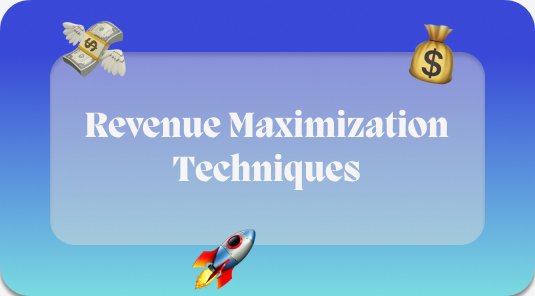Leveraging Customer Lifetime Value for Sustainable Growth

Leveraging Customer Lifetime Value for Sustainable Growth: Key Strategies for Business Success
Customer Lifetime Value (CLV) is a pivotal metric that enables businesses to measure the total worth of a customer over the course of their relationship with the company. Recognizing and enhancing CLV is instrumental for organizations aiming to chart a course toward sustainable growth. It serves as both an outcome of customer satisfaction and a driver of strategic decisions, fundamentally linking marketing efforts with long-term profitability.

Paying close attention to customer experiences and satisfaction levels is crucial as they are directly proportional to the likelihood of repeat business, which is a key component of CLV. By aligning internal operations to maximize customer value, companies can not only retain their customer base but also increase the revenue derived from each customer. These efforts require adopting a data-driven approach to drive marketing and retention strategies, ensuring that operations are optimized to meet customer needs efficiently.
Key Takeaways
- CLV is critical for understanding the long-term value of customer relationships.
- Enhancing customer experience is vital for maximizing repeat business and CLV.
- Strategic, data-informed decisions are imperative for sustaining business growth.
Understanding Customer Lifetime Value (CLV)
In the competitive landscape of business, grasping the concept of Customer Lifetime Value (CLV) and its calculative approach is indispensable for sustainable growth.
Defining CLV and Its Importance
Customer Lifetime Value (CLV) refers to the total revenue a business can reasonably expect from a single customer account throughout the business relationship. The duration over which revenue is calculated may span from the customer's initial purchase to their final engagement with the brand. Understanding CLV is crucial because it helps businesses develop strategies to maximize profit by identifying the most valuable customer segments.
Importance:
- Prioritization of Resources: Businesses can allocate marketing resources more effectively.
- Customer Retention Focus: Understanding CLV shifts focus towards retaining customers.
- Tailored Customer Experience: Allows for customization of services to increase customer satisfaction.
Calculating Customer Lifetime Value
To calculate Customer Lifetime Value, one must consider several variables that contribute to the understanding of a customer's economic value to a company.
Basic Calculation Method:
- Calculate the average purchase value.
- Determine the average number of purchases in a year.
- Compute the average customer lifespan in years.
- Multiply these three figures to get CLV.
Formula: CLV = (Average Purchase Value) × (Number of Purchases/Year) × (Average Customer Lifespan in Years)
Factors In Calculating CLV:
- Revenue: Total amount spent by the customer.
- Profit Margin: The profit margin per customer.
- Retention Rate: The likelihood of repeat purchases; higher rates increase CLV.
- Acquisition Cost: Costs associated must be lower than CLV for the customer.
By taking into account these variables, businesses are equipped to strategically steer their efforts to optimize value over the entire customer lifecycle.
Customer Satisfaction and Experience

In the context of sustainable business growth, customer satisfaction and experience play pivotal roles. Companies aim to deliver exceptional customer experience, which in turn fosters loyalty and drives customer lifetime value.
Measuring Customer Satisfaction
Companies quantify customer satisfaction through various metrics, including net promoter scores (NPS), satisfaction surveys, and customer feedback. Analyzing this data allows businesses to understand their customers' needs and preferences. Indeed, detailed customer feedback is invaluable; it highlights what a company is doing well and where it can improve.
Enhancing Customer Experience
To enhance customer experience, companies are providing proactive and consistently distinctive experiences that resonate with customers. This approach not only retains existing customers but also can attract new ones through positive word-of-mouth. Strategic companies facilitate sustainable choices, offering delivery options that align with environmental concerns, thus improving the customer experience by aligning with their values.
Strategies for Sustainable Growth
Sustainable growth is pivotal for long-term success in business. Key to this is understanding and utilizing Customer Lifetime Value (CLV) and developing robust strategies for customer loyalty and retention.
Incorporating CLV into Business Strategy
Incorporating Customer Lifetime Value into your business strategy is critical. It begins with accurate measurement of CLV to inform decision-making. This data-driven approach enables a business to allocate marketing resources more efficiently, tailoring their strategies to cultivate the most valuable customer relationships for long-term growth. Retooling the marketing efforts to focus on customer value over sheer numbers can establish a more sustainable business growth trajectory.
Fostering Customer Loyalty and Retention
Businesses can foster customer loyalty and retention by delivering exceptional service and personalized experiences. Here are some targeted approaches:
- Personalization: Leveraging data to tailor the customer experience.
- Quality and Consistency: Maintaining high standards in product and service delivery.
- Engagement: Keeping an open line of communication through various channels.
- Rewards: Implementing a rewards system incentivizes continued business.
Customer retention is less costly than acquisition and it lays the foundation for sustainable business growth. Companies that excel in keeping their customers engaged and satisfied benefit from word-of-mouth referrals and a reliable revenue stream.
Data-Driven Decisions
In today's market, the ability to make strategic decisions based on robust analytics is key to achieving profitability and ensuring that resources are allocated effectively. This approach underscores the vitality of harnessing customer lifetime value (CLV) to drive sustainable business growth.
Leveraging Analytics to Drive Profitability
Analytics serve as the backbone for understanding customer behaviors and preferences. By employing data-driven analytics, companies can identify patterns and trends to predict future buying behaviors, thus increasing the accuracy of their profitability forecasts. For example, a cogent analytics system might reveal that customers who purchase a specific type of product are likely to subscribe to a premium service, suggesting an opportunity to cross-sell to this demographic to amplify profits from high-value customer segments.
Resource Allocation Based on CLV
Understanding the CLV allows companies to allocate resources more judiciously. By concentrating marketing efforts and customer service resources on high-CLV segments, businesses ensure they are not expending precious resources on low-return investments. A practical application might involve tailoring loyalty programs to retain customers who are projected to bring in significant revenue over the long term.
In both scenarios, the integration of CLV into resource allocation and strategic decision making processes stands as a quintessential pivot point for companies aspiring to transform data into tangible business growth.
Marketing Approaches for Customer Value Maximization
Maximizing Customer Lifetime Value (CLV) hinges on fine-tuning marketing strategies to foster stronger customer relationships and boost profits. Two pivotal methods are through the personalization of marketing campaigns and strategic customer segmentation.
Personalization in Marketing Campaigns
Personalization in marketing is essential to resonate with customers’ unique preferences and increase the likelihood of purchase. It involves using data analytics to tailor messages, offers, and experiences to individual customers. A key tactic is upselling based on past purchasing behavior, which can enhance value for both the customer and the business. For example, by suggesting complementary products or premium alternatives, businesses can not only provide customers with items they are more likely to enjoy but also increase the average order value.
Segmentation and Targeting Valuable Customers
Understanding different customer segments is crucial for targeting those most likely to bring in long-term revenue. Segmentation involves dividing the customer base into groups based on similar characteristics, such as demographics, behaviors, or purchase history. By focusing on high-value segments, companies can allocate resources effectively. For instance, segmentation can identify which customers are most receptive to loyalty programs or premium services, aligning marketing efforts with those more inclined to repeated engagements.
Customer Retention Programs
Customer retention programs are strategic initiatives designed to increase the retention rate and reduce churn by rewarding loyalty and fostering a sense of community among customers.
Designing Loyalty Programs
Loyalty programs are structured marketing strategies that reward, and therefore encourage, loyal buying behavior — behavior which is potentially beneficial to the firm. In designing a loyalty program, it's essential to provide tangible benefits that entice customers to make repeat purchases. For example, a point-based system where customers earn points for each purchase that can be exchanged for discounts, products, or experiences, is a proven method to reduce churn. The key is to ensure that the rewards escalate in value the more the customer shops, reinforcing the incentive to stay loyal.
Community Building and Customer Advocacy
Community building and customer advocacy go hand in hand in strengthening customer relationships and enhancing lifetime value. Community building involves creating branded platforms where customers can interact, share experiences, and feel a sense of belonging. This could be in the form of user groups, online forums, or events. Efforts here can transform customers into brand advocates who organically promote the business. Such advocacy is a powerful tool to attract new customers while solidifying existing relationships, contributing to a lower churn rate and a stronger retention rate.
Optimizing Operations
In the pursuit of sustainable growth, the impact of RevOps on streamlining operations cannot be overstated. Operations optimized for customer lifetime value hinge on two critical areas: refining customer service and success and enhancing operational efficiency in customer management.
Customer Service and Success
In premium customer service, the aim is to deliver consistent and personalized experiences. Effective RevOps strategies ensure that a company's departments are seamless in communication, leading to higher satisfaction and loyalty. These well-choreographed interactions often result in improved customer lifetime value, as indicated by the role of RevOps in optimizing customer relationships.
Operational Efficiency in Customer Management
For better customer management, it is imperative to employ analytics and data insights, allowing a business to interact with their clients more effectively at the opportune times. Incorporating real-time data can significantly optimize revenue and reinforce long-term relationships, as underlined in the strategy to maximize customer lifetime value. An advanced approach to operational efficiency gravitates towards anticipating needs and predicting behaviors, which fosters an environment of exceptional customer service.
Future-Proofing Your Business
To secure future revenue and assure sustainable growth, businesses must deeply embed the practice of nurturing long-term customer relationships and remain nimble in the competitive landscape. These strategies are not just good practice; they are essential for a business that aims to thrive in the future.
Investing in Long-Term Customer Relationships
Building enduring customer relationships translates into sustained revenue over time. Companies should focus on understanding and meeting customer needs consistently. Strategies include:
- Personalization: Tailoring experiences to individual preferences.
- Quality Customer Service: Ensuring every interaction adds value.
- Loyalty Programs: Rewarding continued patronage.
Adapting to the Competitive Landscape
Remaining competitive requires businesses to continuously adapt and innovate. They should:
- Analyze market trends and customer feedback to stay ahead.
- Leverage insights on customer lifetime value to make informed decisions that drive competitiveness.
- Embrace sustainable practices and ethical values, as these resonate well with modern consumers.
Incorporating these key elements helps a business to future-proof itself by fostering reliable customer relationships and responding proactively to the evolving competitive landscape.
Stay up to date with our blog
Dive into our informative and engaging blog posts to stay informed on the latest trends in the Webflow & Shopify world as well on actionable tips to make your website work for you.



Contact us
We're only 1 email, call, message or meeting away. We'd be happy to help with your query. Book in a time on our calendar so we can speak.





